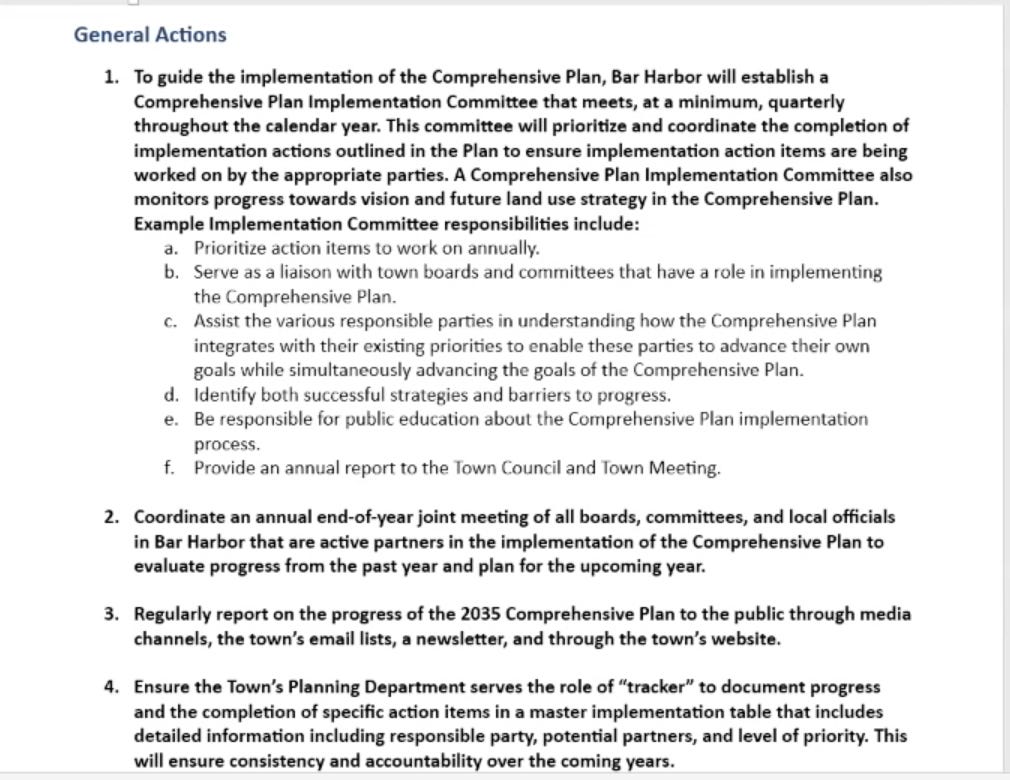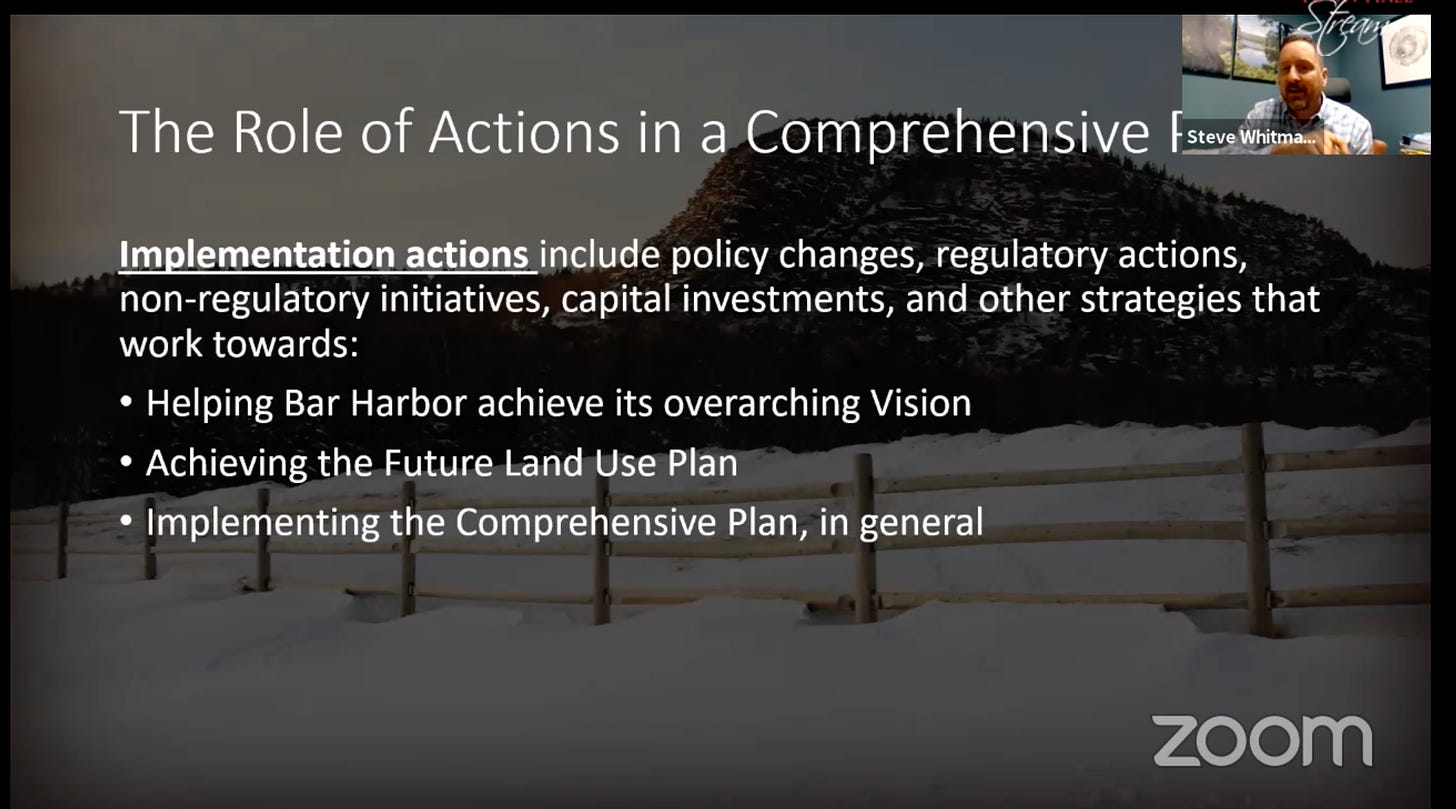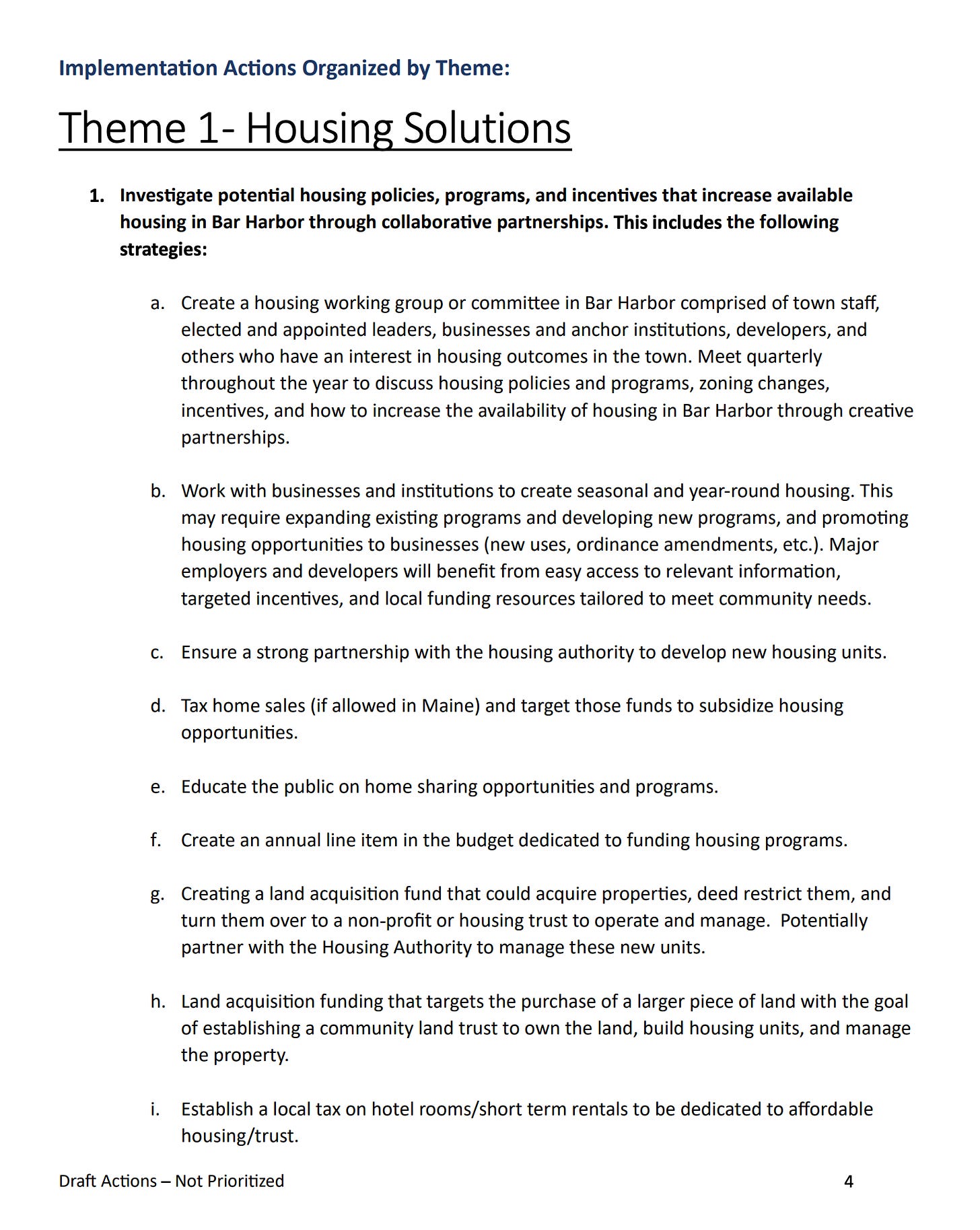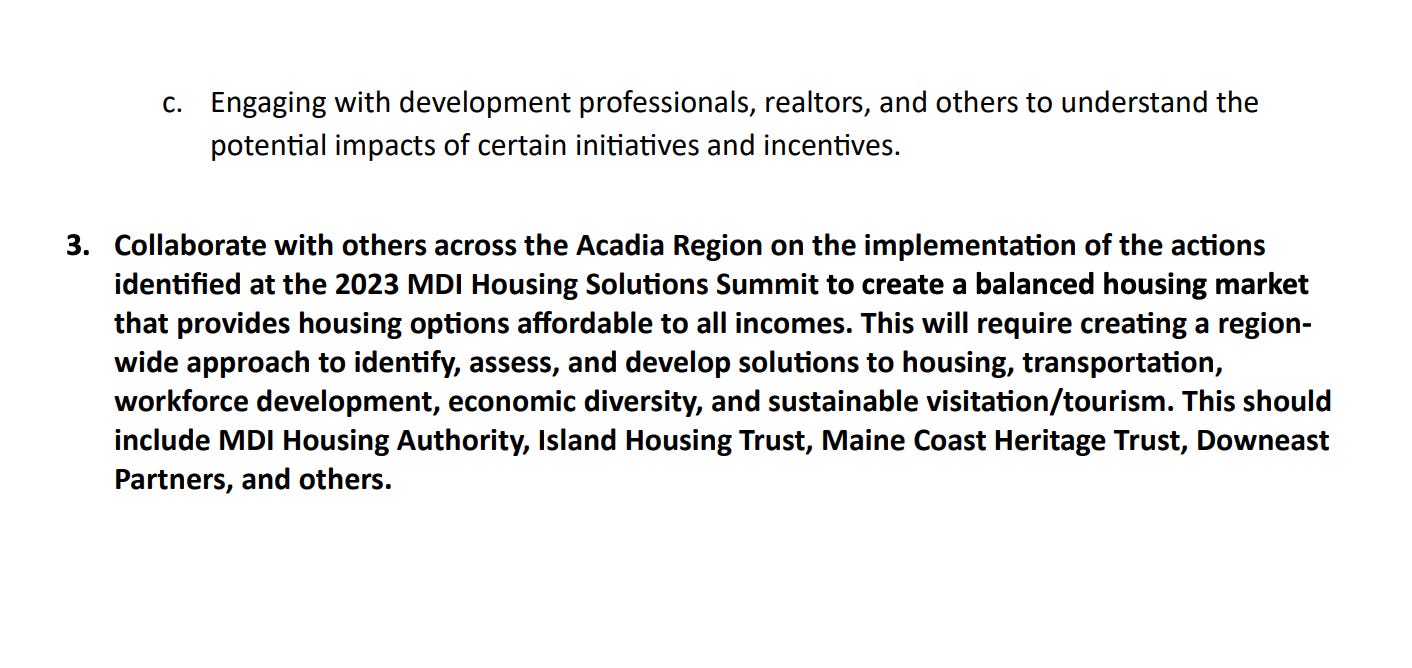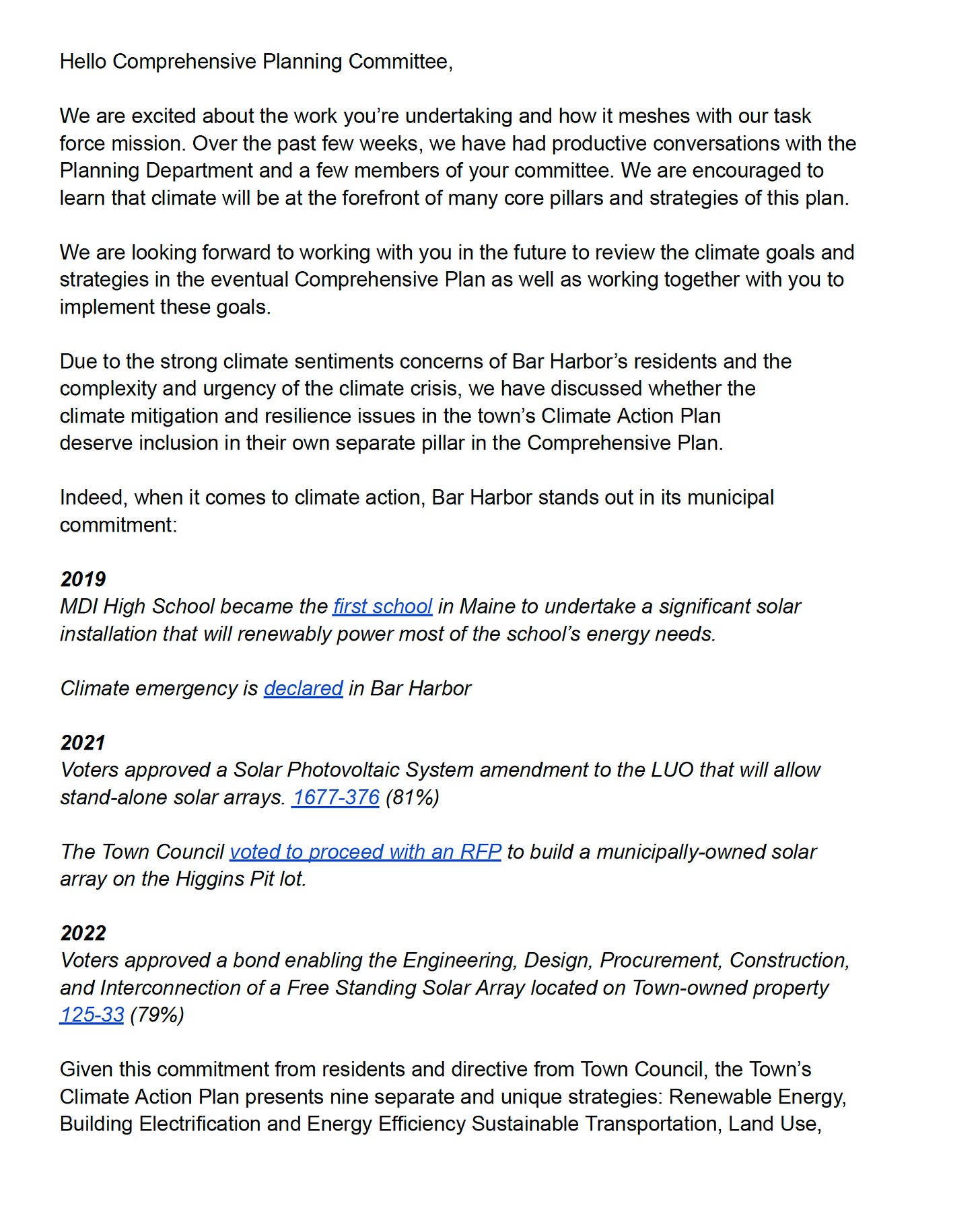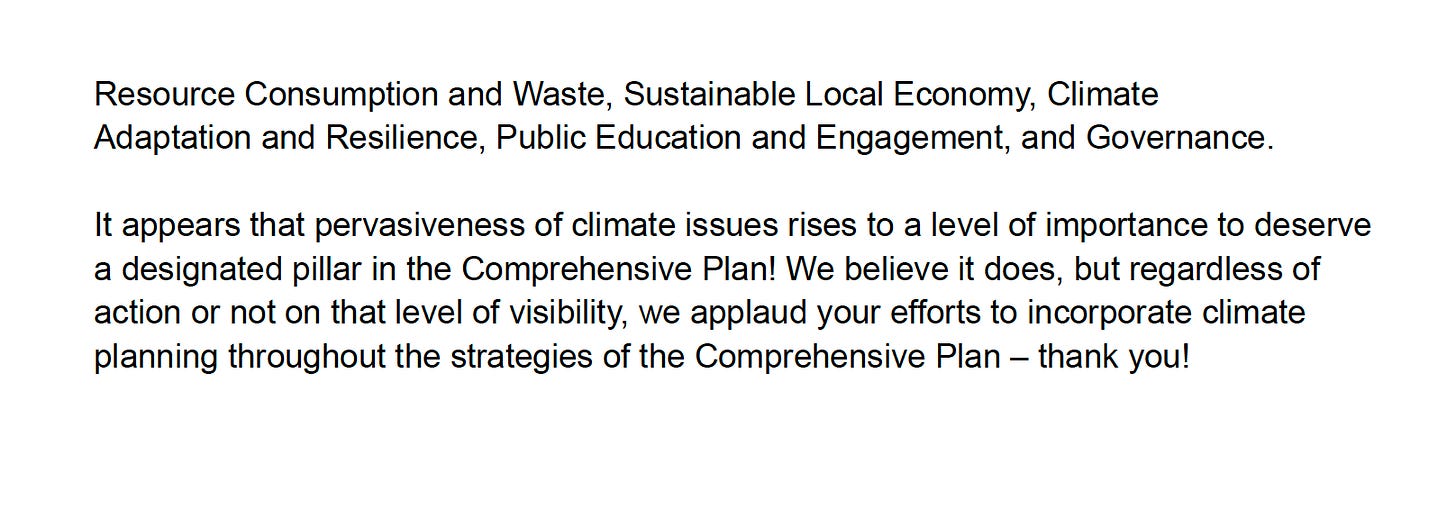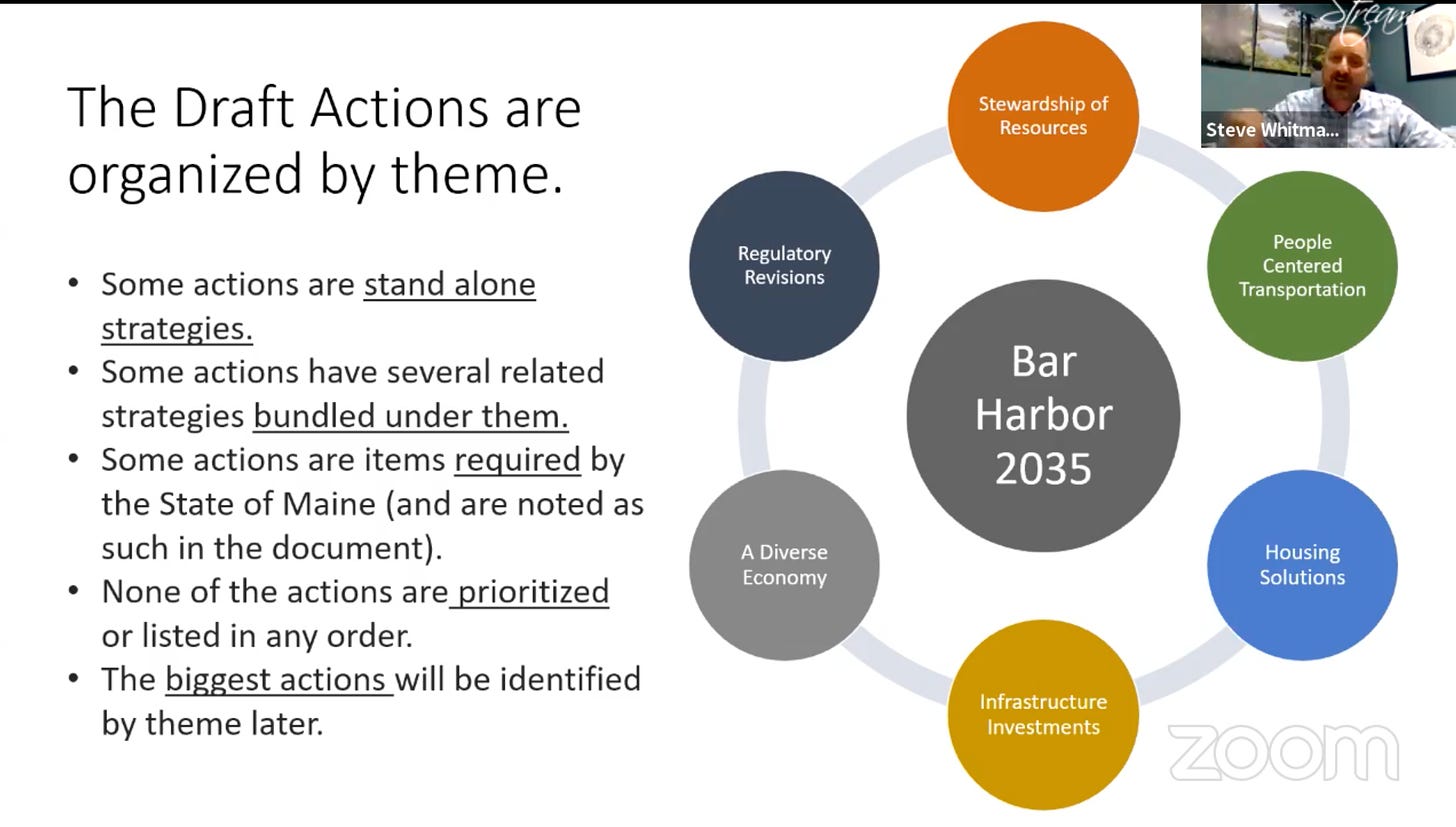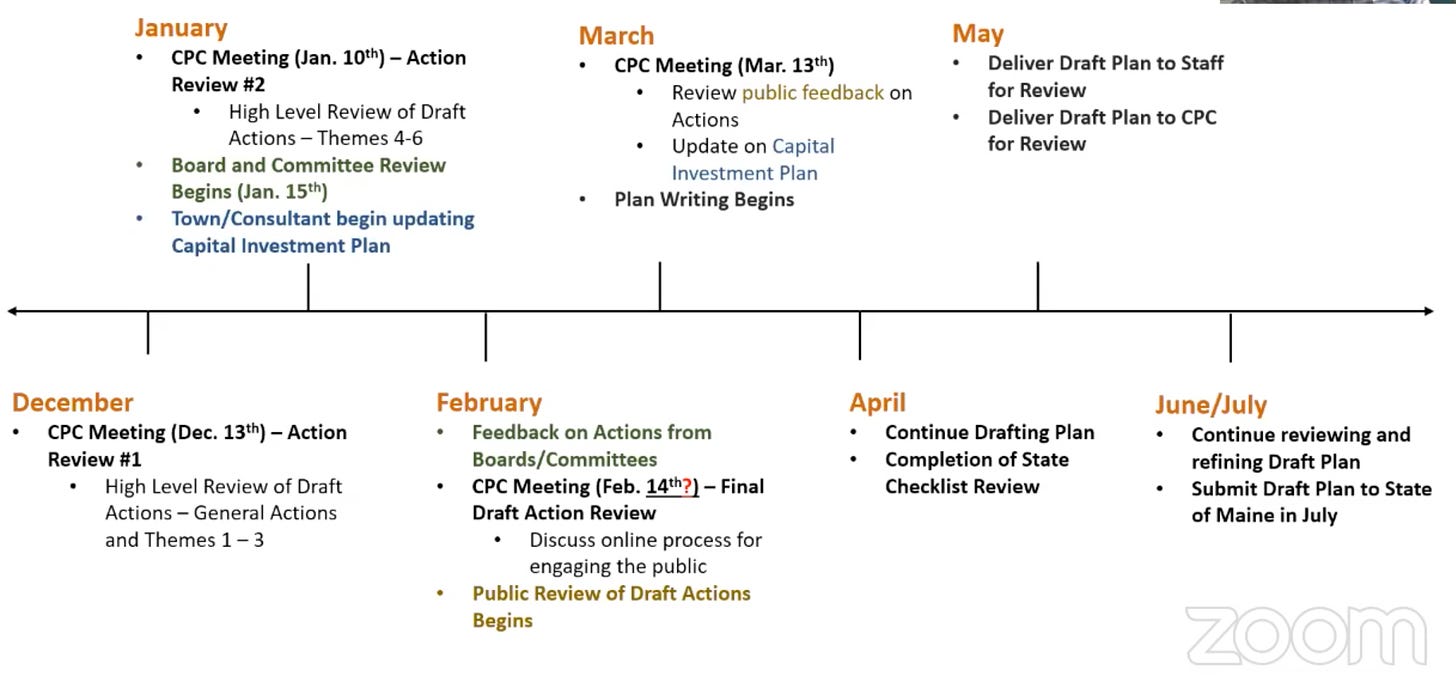Bar Harbor Likely Can’t Meet Housing Needs On Its Own
Comprehensive Planning Committee Talks Actions, Climate, and Housing
BAR HARBOR—The Comprehensive Planning Committee took a deep dive into housing and climate change as its members worked through an overview of the plan’s proposed draft themes and actions, Wednesday night.
The state mandates that municipalities update their comprehensive plans and the plans are meant to guide the town and help officials implement plans for Bar Harbor’s future, including development, protection of natural resources, and other pieces that the town deems important.
The last plan was in 2007. The plans are meant to guide the town’s priorities and goals for ten years from its adoption.
HOUSING AND DRAFT ACTIONS
One committee member wanted to corroborate the ideas with state law, but also spoke about being careful because those laws can change. Committee member Misha Mytar also talked about adding in more language about working with partners (other towns, regional committees, for profit and not for profit) to achieve things. Partnerships about housing issues and the existence of Island Housing Trust were also mentioned as being needed within the document.
Committee member Elissa Chesler said classifying different terms such as “seasonal rental,” “long-term rental,” or the rentals needed for College of the Atlantic students and faculty members and other definition specifics were needed.
Town Council Chair Val Peacock said she was nervous about specific solutions within the plan that the town would do.
“It’s interesting to see it like this, but it does feel specific to me,” she said. She wanted to hear from other members about whether they wanted to have it be so specific.
“I think I’m comfortable with some of the specifics. I think we need to get to some of the specifics. I feel it might be easier to digest under some of the categories.” Mytar said it would be helpful to group specific actions under themes.
She also asked for more uniformity in specificity saying that some places were vague while others were incredibly specific.
Town Planning Director Michele Gagnon said that the actions are from the Housing Policy Framework, another living document, that’s second version has been presented to the City Council.
Chesler suggested describing the actions as “examples” of actions that can be taken. “It helps get a jump start if there are very concrete suggestions.”
Committee member David Woodside spoke about his worries regarding how the town can get more than 600 housing units and where they would go in a town where much land isn’t considered developable because of wetland presence and other needs.
According to an assessment last year, Bar Harbor needs an additional 616 rental units by 2033. And an additional 94 owner-occupied housing units.
The state of Maine itself needs between 76,400 to 84,300 new homes by 2030 to house new and current residents.
“A lot of the available land for various reasons is not considered appropriate to develop,” Woodside said.
He said throughout the comprehensive planning process, people have brought up that there are a myriad of reasons for not developing land off the sewer and water structure. At the same time, developing more on the current sewer and water system would create a need for thicker density in the small downtown area.
“We can’t solve this (in) each town individually,” said Community and Housing Planner Cali Martinez, and she also said that regional involvement is needed.
“We are working on housing on multiple levels,” Town Planner Michele Gagnon said. She referenced the town’s proposed land use amendments and housing policy framework, which creates actions to help attack Bar Harbor’s housing issue, which is made more complicated by approximately 40 zones, a complicated land use ordinance, high construction costs, supply and labor costs, and an aging housing stock.
Woodside asked if they could acknowledge the needs in the plan, but also acknowledge that the need can’t be met just within Bar Harbor because of the constraints he mentioned before.
“We have this number out there and it’s impossible right now without redevelopment or some other major change in how existing units are being used to come up with that number of units,” Chesler said. That means that strategies to come up with the way to meet the need aren’t explicit in the plan.
THE PLAN AND CLIMATE
Ruth Poland and Ezra Sassaman from the town’s Task Force on the Climate Emergency encouraged the Comprehensive Planning Committee to include and review climate goals and strategies in the Comprehensive Plan, citing the importance to Bar Harbor voters.
Poland said that she and Sassaman wanted to show that they want to be engaged in the comprehensive planning process and make sure that the task force’s goals and mission is represented.
“We just kind of wanted to make sure that we got in at the right time and not too late,” Poland said, meaning before it’s too late to give perspective and thoughts in the process.
Sassaman said they were looking forward to working with the committee in the future and help implement the plan’s goals. He also said the task force members thought that climate needs and mitigations deserved its own pillar in the plan.
The group discussed several vision pillars and elements of the plan.
There are six pillars and themes that are organized.
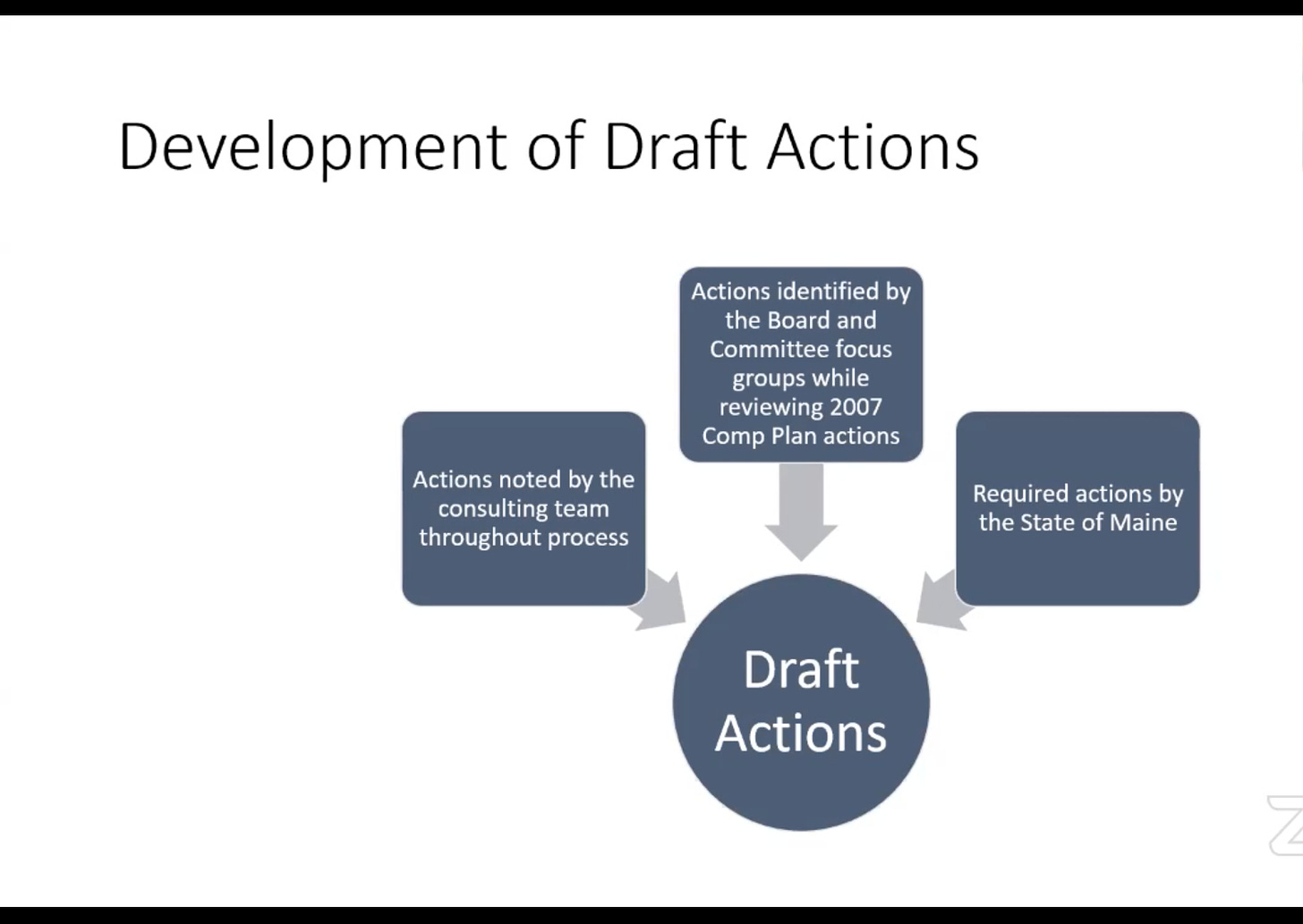
Committee member Elissa Chesler said that they could have a specifically related theme connected to climate change. Or, the plan could relate each theme more to climate change. A lot of those items currently reside in the pillar “stewardship of resources,” which encompasses many things. However, stewardship implies protecting current resources, while the task force is about action items that are more proactive in preventing or mitigating climate emergencies.
OTHER THOUGHTS FROM THE PUBLIC
The Comprehensive Planning Committee’s live feed began in darkness as the Town Hall Streams, Zoom, and in person meetings all occurred at once. There were also some hitches with the Zoom audio. The live feed cut out in the middle of Gagnon speaking.
The committee approved the minutes from August 9. Councilor Kyle Shank, former committee chair, had an excused absence. There were members of the public in attendance and on Zoom. The Planning Board’s Ruth Eveland and Clark Stivers, Task Force on the Climate Emergency’s Ezra Sassman and Ruth Poland, and Appeal Board member Cara Sawyer all attended as members of the public.
Eveland, speaking from the public, mentioned communicating data and information. She wanted to be sure that there was access to information that was available rather than just data about information. She talked about a potential listing of rentals available as an example of something helpful, rather than just aggregate numbers that so many rentals were available at a given time.
She mentioned that she thought the town’s water table should potentially be listed within the document.
“It’s one of the things that neighbors are frequently the most anxious about,” she said.
Stivers also talked about broadband needs and how the town hasn’t taken advantage of past opportunities.
TIMELINE
Steve Whitman of Resilience Planning presented a timeline of the Comprehensive Planning project with the submission of the plan in June or July 2024.
“We will need some money in the CIP (capital improvement program),” Gagnon said to implement some of the actions in the plan. That depends on the fiscal status of the town, and it could take a few years to build up that CIP line, she said. She said they had to prioritize fiscally what the town wants to accomplish.
“Let’s identify what our ten most important things that actually need to happen (are) and let’s make sure that those are executed,” Gagnon said to the committee members. “What are those most important things?”
The implementation of actions in the plan was also discussed. The actions, Whitman said, need to be shared to the public and have the public reminded that there have been outreach opportunities throughout the process. Those were the May 2023 forums, earlier forums, and surveys as well as committee feedback. Each meeting also has opportunities for public comment.
A COMMITTEE TO OVERSEE THE COMPREHENSIVE PLAN THROUGH THE YEARS
One general action discussed was a potential committee that would meet every year, possibly semi-annually, possibly quarterly, and make sure that action items from the plan are being worked on and implemented. It was suggested that the committee be made up of department heads and committee chairs.
Peacock said it was exciting to have a way that all the committees could work together and meet.
“That’s not happening right now,” Peacock said, adding that it could be useful and productive.
“In terms of giving committees meaningful work to do,” Eveland said, “that is very exciting.”
“When you write plans and they sit on the shelf, people lose confidence and don’t want to take part of things because they think it’s a waste of time,” Gagnon said. Dynamic documents that can shift overtime and have actions are important.
Woodside said he supported the concept, but worried about some of the details.
LINKS TO LEARN MORE
Website dedicated to Bar Harbor’s Comprehensive Plan project.
Existing Conditions Analysis Report
Our December 15 story about the last Comprehensive Planning Committee meeting and discussion.
https://barharborstory.substack.com/p/housing-needs-pressure-bar-harbor







